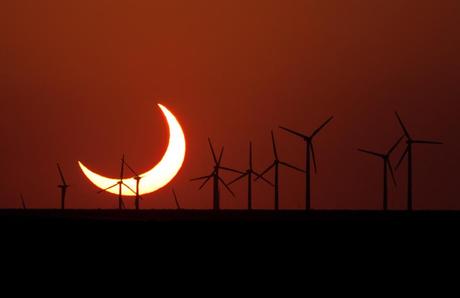
-
A total solar eclipse is a sight to behold, but don't forget to look around you.
There's more to see during a total solar eclipse than just the moon itself.
Solar flares, a beautiful corona, 2 planets and a diamond ring are just some of the things to look out for.
When a total solar eclipse sweeps across the United States on April 8, more than 31 million Americans living in the path of totality, where the moon will completely obscure the sun, will be able to witness a series of rare phenomena that many in their own country cannot see. shall see. hometowns again for hundreds of years.
"It's rare to see a total solar eclipse," Rick Fienberg, project manager of the American Astronomical Society's Solar Eclipse Task Force, told Business Insider. "If you're lucky enough to be on the trail, you're very lucky."
That's because the unique sights that occur before, during and after the total solar eclipse are "phenomenal," Fienberg said. And some of these you will see twice: once as the moon moves over the sun, and again as it moves away.
"At the end of totality, the whole unfolds in the opposite direction," Fienberg said.
Here are eight sights he recommends looking for during the total solar eclipse.
1. A 360 degree sunset
If you can, get a clear view of the horizon for the event. In the few minutes before and after totality, the moon will move past the sun, creating a unique 360-degree sunset.
Sunset and sunrise colors are created when sunlight low in the sky penetrates more of the atmosphere and hits dust and moisture in the air. This scatters the light, making it appear yellow, orange and red.
During totality, the light from outside the moon's shadow follows a similar path, and your eyes perceive it in the same way, so the entire horizon will look like one giant sunset.
2. A silvery, purple sky
The story continues
So if only the limb is visible just before and after totality, "the entire color of the sky changes," taking on a purple or silvery hue, Fienberg said.
3. Sunspots and solar prominences
At this time the sun is approaching its highest level of magnetic activity, a time known as maximum solar energy that happens about every 11 years. This means more sunspots, which are giant dark circles on the solar surface many times as large as the Earth .
With binoculars or a telescope with a sun-resistant filter, sunspots will be very clearly visible during the periods of partial solar eclipse, Fienberg said.
You can also look toward the edge of the sun to possibly spot solar flares: giant prominences shooting off the sun's surface. They look neon pink.
4. Crescent shadows
It works like this: when sunlight passes through a small area - such as a hole, leaves on a tree or holes in a colander - the shadow reflects the sun's crescent shape.
If you stand with your back to the sun and hold an object with small holes (Fienberg suggests a Ritz cracker or a serving spoon with slotted holes), you'll see small crescent shapes amid the shadows on the ground.
"People have a lot of fun with that," Fienberg said.
5. Venus and Jupiter
Venus should appear first, about ten minutes before totality, while Jupiter will become most apparent during totality, but could also be visible for a few minutes just before and after.
6. Baily's beads
When the moon moves over the sun, it obscures the light. But "the moon is not a smooth sphere like marble," Fienberg said. "It's rugged," because of mountains, valleys and craters. That leads to one of the most remarkable eclipse phenomena: Baily's Beads named after the English astronomer Francis Baily, who explained them in 1836.
"Baily's beads are the last bits of sunlight visible through deep valleys on the moon's surface before it completely covers the sun," Fienberg said. They appear as round sunbeams about 10 seconds before and after totality.
7. Diamond ring effect
At this point the corona, or outermost layer of the sun, begins to become visible. The result is a beautiful ring of sunlight with one great prominence, resembling a diamond solitaire in the sky.
It can be difficult to see the diamond ring effect because it only lasts a moment and you won't see it if you still have your eclipse glasses on. But it's also important to keep your glasses on until totality begins, when the moon completely obscures the sun and it's safe to take off your glasses.
That's why Fienberg recommends looking for the diamond ring effect alone totality. Take off your glasses and put them back on as soon as the diamond ring appears.
8. The corona of the sun
Once the moon completely covers the sun's surface, you can see the corona, or outer part of the sun's atmosphere. It will appear as a bright, symmetrical glow coming from behind the moon's shadow.
Moreover, it will be particularly spectacular this year because the appearance of the corona changes with the level of the Sun's magnetic activity. As the sun approaches solar maximum, the corona will appear more vibrant, symmetrical and larger in April than during previous eclipses.
"It's really dramatic," Fienberg said.
Read the original article on Business Insider
